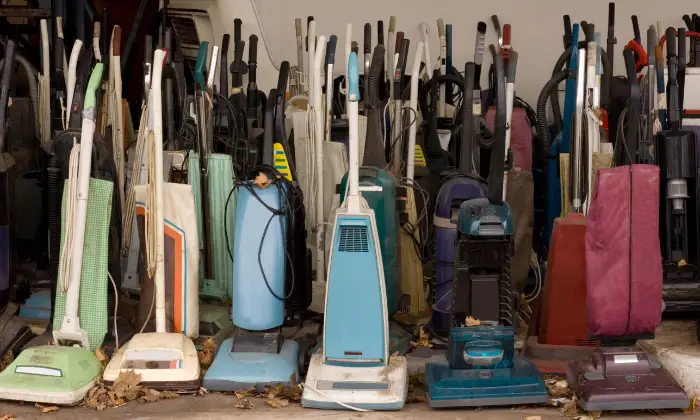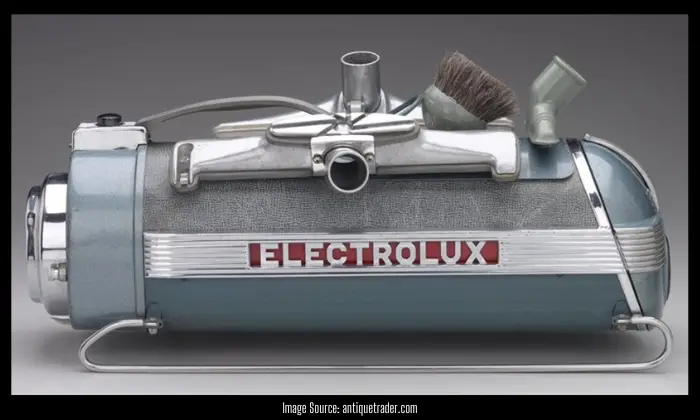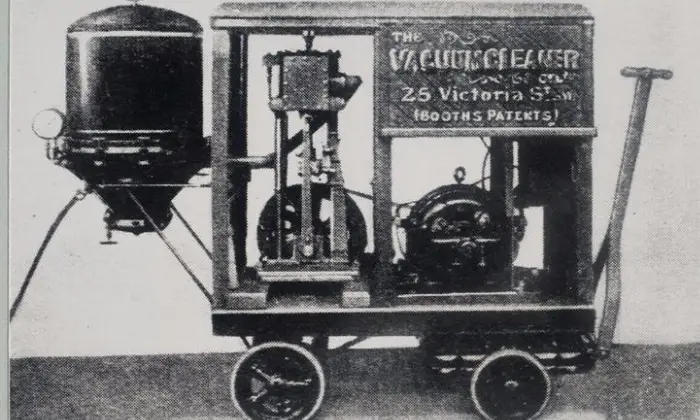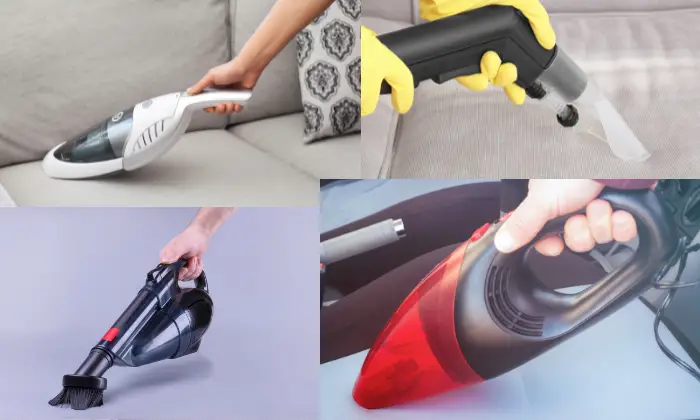
The vacuum cleaner has become essential in our daily lives, making cleaning our homes & spaces much more efficiently. But have you ever thought or wondered about the history and past of this incredible invention?
Or do you ever thought of antique vaccum cleaner and how was the 1990s vacuum cleaner interesting facts?
In this blog, we’ll dive into the fascinating story of vacuum cleaners, from its humble beginnings to the modern, high-tech machines we use in today.
Early Attempts: The Invention of the Vacuum Cleaner

Manual vacuum cleaners
Before the invention of motorized vacuum cleaners, people had to rely on manual methods to clean their homes. These early devices, such as carpet beaters and brooms, required significant physical effort and could have been more effective at removing dirt and dust.
Daniel Hess’s carpet sweeper
In 1860, an American inventor named Daniel Hess patented a carpet sweeper that used bellows to generate suction. This device was an early precursor to the vacuum cleaner, but it was still manually operated and needed to be more practical for widespread use.
The invention of the First Motorized Vacuum Cleaner

Hubert Cecil Booth and the Puffing Billy
The first motorized vacuum cleaner was invented by a British engineer named Hubert Cecil Booth in 1901. Booth’s invention, known as the “Puffing Billy,” was a large, horse-drawn machine that used an internal combustion engine to power a fan that created suction. Although the Puffing Billy effectively cleaned large spaces, it was unsuitable for homes due to its size and noise.
Walter Griffiths’ portable vacuum cleaner
In 1905, another British inventor, Walter Griffiths, introduced a more practical, portable vacuum cleaner. This hand-powered device used bellows to generate suction but required much manual effort.
Further Developments in Vacuum Cleaner Technology

James Murray Spangler’s invention
American janitor James Murray Spangler invented the first truly portable and motorized vacuum cleaner in 1907. Spangler’s design used an electric motor to power a rotating brush and a fan to create suction. He later sold the patent to an entrepreneur named William Henry Hoover.
William Henry Hoover and the Hoover Company
Hoover improved upon Spangler’s design and began mass-producing vacuum cleaners under the Hoover Company in 1908. These early models were expensive and primarily marketed to the upper class. However, the Hoover Company continued to innovate, and by the 1920s, vacuum cleaners became more affordable and accessible to the general public.
Modern Vacuum Cleaners

Upright vacuums
Today, upright vacuum cleaners are the most common type found in homes. These machines typically feature a motor, suction fan, and rotating brush, all housed within a single unit. Upright vacuums are known for their strong suction & ability to clean carpets and hard floors effectively.
Canister vacuums
Canister vacuums consist of a separate motor and suction unit connected to a cleaning wand by a flexible hose. These versatile machines are often equipped with various attachments, making them suitable for cleaning surfaces, including upholstery, curtains, and stairs.
Stick vacuums
Stick vacuums are lightweight, cordless vacuum cleaners for quick cleanups and small messes. They usually have a slim profile and are easy to manoeuvre and making them ideal for tight spaces or hard-to-reach areas.
Robotic vacuums
Robotic vacuums are a popular innovation in vacuum cleaner technology. These autonomous machines are programmed to navigate and clean your home without human intervention. Most robotic vacuums have sensors to avoid obstacles and can be controlled via smartphone apps or voice commands.
Impact of Vacuum Cleaners on Society

The invention of the vacuum cleaner has had a significant impact on society. It has made cleaning our homes much more efficient and convenient, freeing up time for other activities.
Vacuum cleaners have also improved indoor air quality by removing allergens from our living spaces, such as dust and pet dander.
Furthermore, advancements in vacuum cleaner technology have created manufacturing, sales, and maintenance jobs.
FAQs
Q: Why is the vacuum cleaner a great invention?
The vacuum cleaner is a great invention because it has significantly improved the efficiency and convenience of cleaning our homes, allowing us to maintain a cleaner living environment with less effort. Additionally, vacuum cleaners have enhanced indoor air quality by removing allergens and dust particles.
Q: Who invented the first vacuum cleaner in 1920?
Vacuum cleaners were already invented before 1920. However, during the 1920s, the Hoover Company made significant advancements in vacuum cleaner technology, making them more affordable and widely available to the general public.
Q: Who invented the vacuum cleaner in 1869?
In 1869, Ives W. McGaffey patented the “Whirlwind,” a hand-operated vacuum cleaner. It was an early version of a vacuum cleaner but was not motorized and required manual operation effort.
Q: What is the use of a vacuum cleaner?
A vacuum cleaner’s primary benefit is removing dirt, dust, and debris from various surfaces, such as carpets, hard floors, upholstery, and curtains. Vacuum cleaners can also help improve indoor air quality by effectively removing allergens and dust particles from the living environment.
Q: What is the first name of the vacuum cleaner?
The first patented vacuum cleaner, invented by Daniel Hess in 1860, was called a carpet sweeper. The device used bellows to generate suction and was an early precursor to modern vacuum cleaners.
Q: Who named the vacuum cleaner?
The term “vacuum cleaner” likely evolved from the early devices that used suction to clean surfaces, with “vacuum” referring to the absence of air in the suction mechanism and “cleaner” describing the device’s purpose.
Q: What is in a “vacuum” ?
A vacuum is space devoid of matter or air. In the context of a vacuum cleaner, the term refers to the suction mechanism created by the device’s motor and fan, which generates negative pressure to remove dirt and dust particles from surfaces.
Q: Why is a vacuum called a vacuum?
A vacuum is called a vacuum because it refers to a space with little to no matter, such as air. In the context of a vacuum cleaner, the term describes the suction mechanism, which creates a low-pressure environment that allows dirt and dust particles to be effectively removed from surfaces.
Conclusion
The vacuum cleaner technology has come a long way, from early manual cleaning methods to the advanced machines we use today. This essential household tool has revolutionized how we clean our homes and has impacted our lives.
As technology continues to devolve, it will be exciting to see what the future holds on for vacuum cleaners and how they will continue to shape our world.





